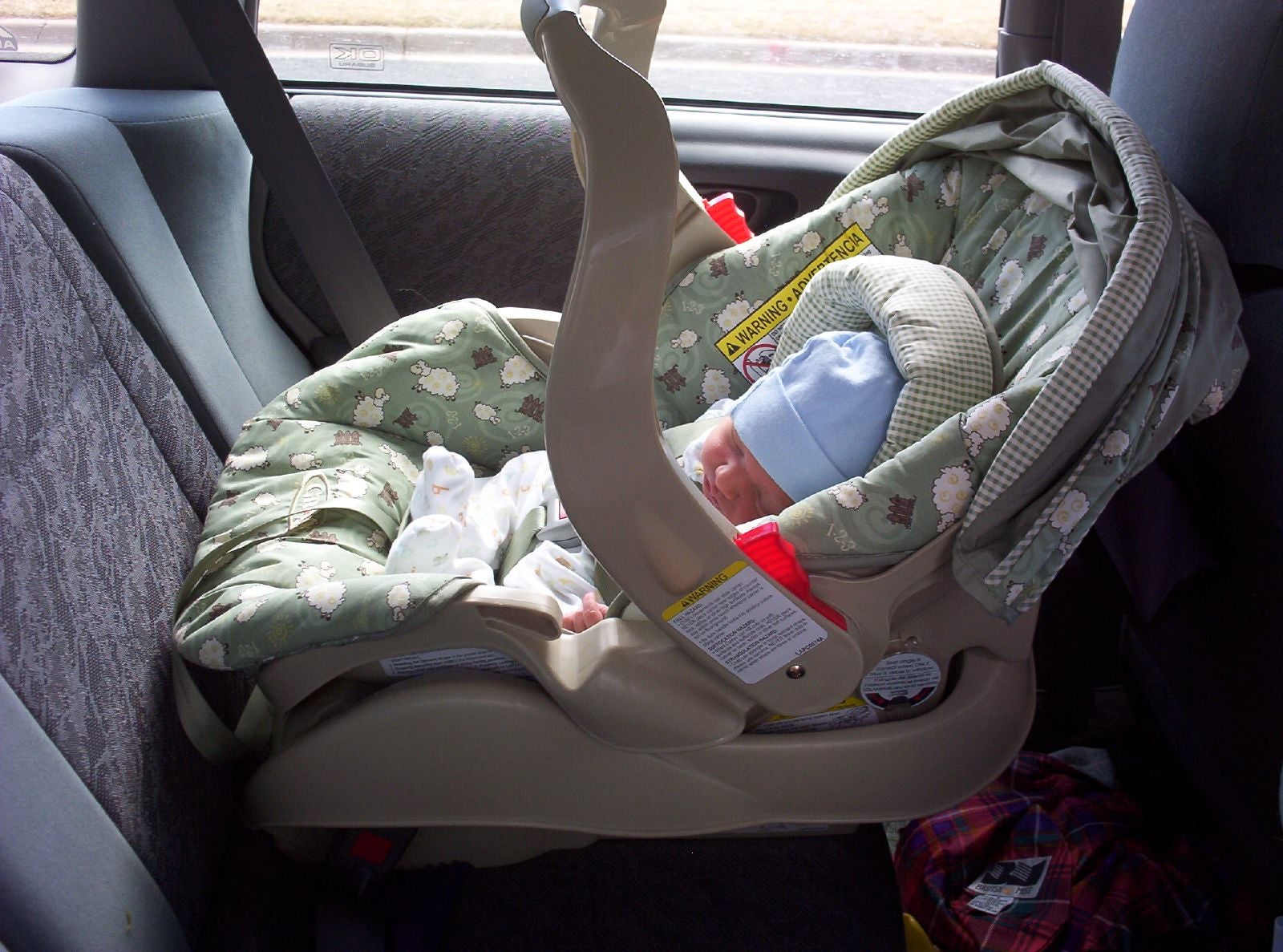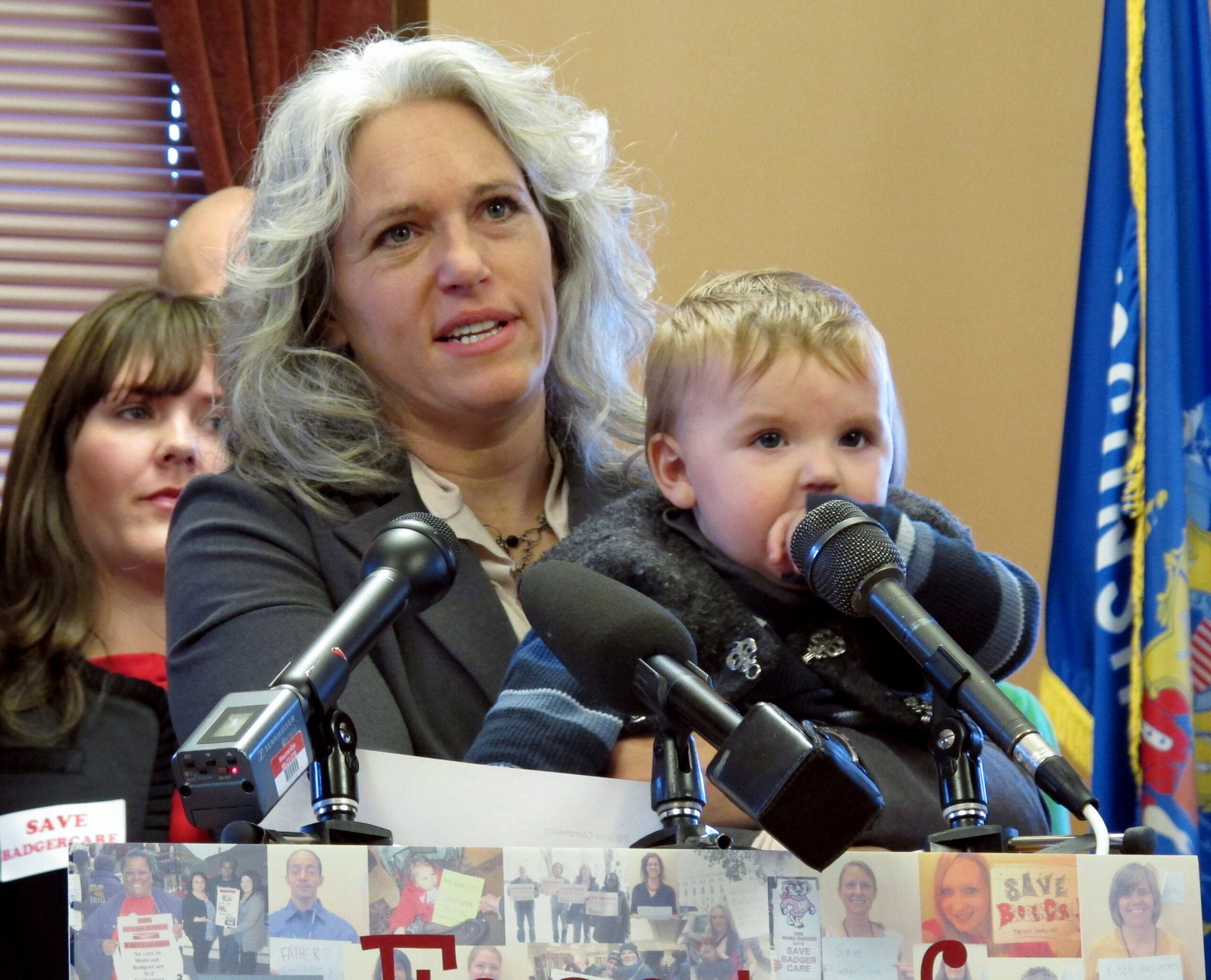Counterfeit car seats are showing up in stores and online, according to the Center for Childhood Safety in Green Bay.
“They are everywhere,” said the center’s executive director, Kimberly Hess.
Hess told WPR’s “Wisconsin Today,” that Bellin Health, a local health care system, recently detected a counterfeit car seat.
News with a little more humanity
WPR’s “Wisconsin Today” newsletter keeps you connected to the state you love without feeling overwhelmed. No paywall. No agenda. No corporate filter.
Now, the center has a warning for parents.
“It’s really sad because parents don’t realize,” she said. “They end up buying and falling in love with this car seat only to be heartbroken at the last minute.”
According to Wisconsin law, kids must be in a car seat until the age of 4. But a new analysis by AAA and the National Safety Council reveals that parents stop using car seats after the age of three.
“Our law is outdated,” she said. “At the center, we really focus on the 4 feet, 9 inches tall to get out of the booster seat. That means the seat belts are going to fit you appropriately.”
The Green Bay center checks about 900 car seats per year and recommends that parents visit Safe Kids Wisconsin to find a certified car seat technician in their area.
Hess explained what parents or guardians should look for to spot counterfeit or faulty car seats.
The following interview has been edited for clarity and brevity
Rob Ferrett: What are the red flags of a counterfeit car seat?
Kimberly Hess: You can’t always tell by looking at the pictures, but you want to make sure it’s a reputable company. You can find these as well in a lot of box stores. Make sure there is a return policy. That’s usually our No. 1 rule of thumb because they can make the pictures look real good. Unfortunately, when it arrives, it’s missing lots of things that a car seat should not be missing.
What we use here in the U.S. is called a five-point harness. Oftentimes when you get a counterfeit car seat, it’s missing that chest piece, which is vitally making it a five-point harness.
Manufacturers love to put labels and warnings all over the car seat. If there are very few labels on the car seat, it’s probably counterfeit. The Center for Childhood Safety is a free resource. People can call us.
RF: Is the price often too good to be true?
KH: We tell families all the time that spending more money does not mean more safety. You can find car seats out there for $60 or you can go spend over $500, really. What you’re getting is convenience. Maybe you wanted a pink car seat instead of a gray car seat.
Do your research, because spending more money does not mean more safety at all.
RF: What would be the concern of these counterfeit car seats?
KH: They’re not going to be going through crash testing like the legitimate seats do. You absolutely don’t want to be using those counterfeit seats because they’re not crash tested.
There’s no guarantee how they’re going to work, what kind of weight limits they can withstand. The tests that car seats go through are so vigorous.
RF: What should parents be thinking about as far as height and weight?
KH: Your pediatrician is going to want you to max out the height and weight limit of those car seats before you make the transition to the next one. For example, your pediatrician is going to want you to use a rear-facing car seat until they’re 40 pounds. My daughter was not 40 pounds when she was four.
A seat belt is not going to fit them appropriately. It’s going to be across their stomach or their chest. They’re definitely not using the shoulder belt. It’s going to be behind them. We’re going to see some major internal injuries if they’re in a car crash, if not ejection.
RF: The Childhood Center of Safety reports that nine out of 10 car seats in Wisconsin are installed incorrectly. What are we looking for?
KH: When you’re grabbing it at the belt path, it needs to be moving less than an inch side to side and front to back. That is probably the biggest culprit.
We’re not seeing those harnesses tighten up, either. Parents are hesitant about pulling those harnesses tight, as well as having that chest piece up high. Many put it down low, so it’s on their tummy. It needs to be up high, so it’s on their hard chest plate. That means your finger should be going into their armpits, kind of tickling them.
RF: How about used car seats?
KH: We recommend you stay away from them if you’re buying them off online sites. You don’t know how that person used that car seat, if they took it apart, if they put it back together properly. Was it in a car crash?
If you know who you’re getting it from and you know the history of that car seat, then it’s OK.
RF: If an older sibling has graduated from that car seat and younger sibling is ready for that size, might that be okay?
KH: That might be OK. But with that, there’s the caveat. Car seats have expiration dates. Most car seats have a six-year life, some have a 10-year life. It just depends upon how they were manufactured, again.
They do not make car seats easy for people to understand. It is buried in that manual.







